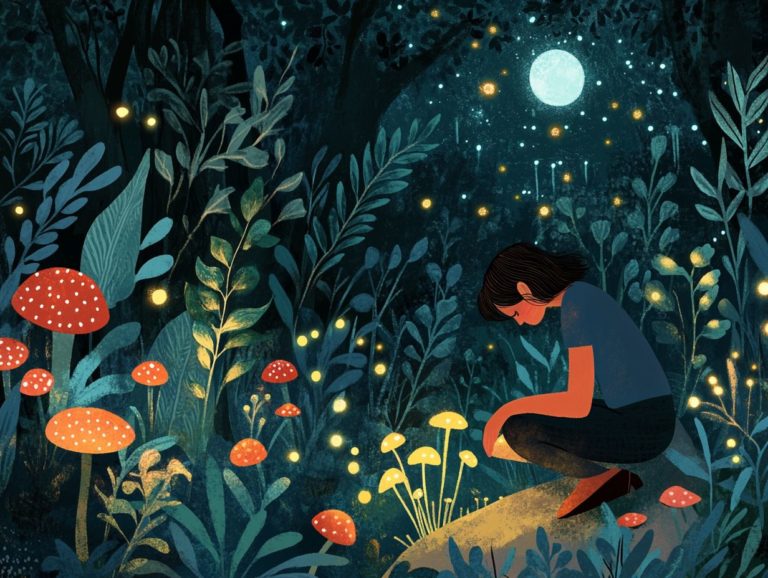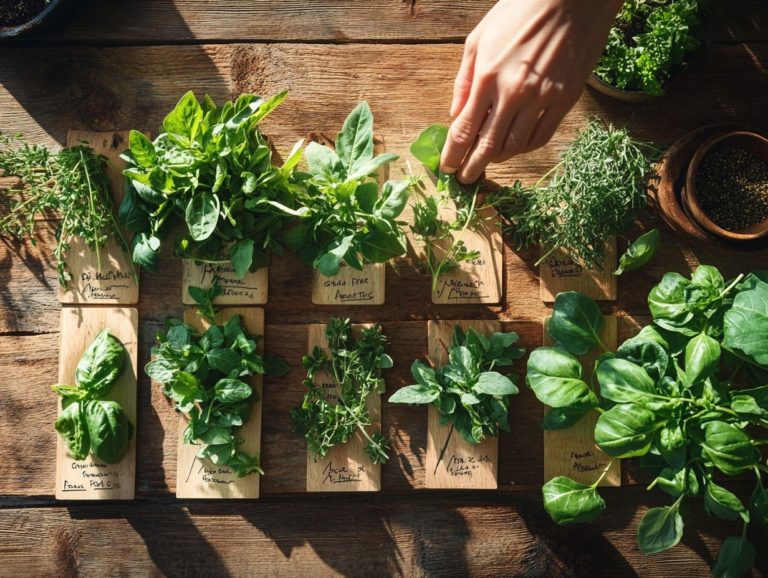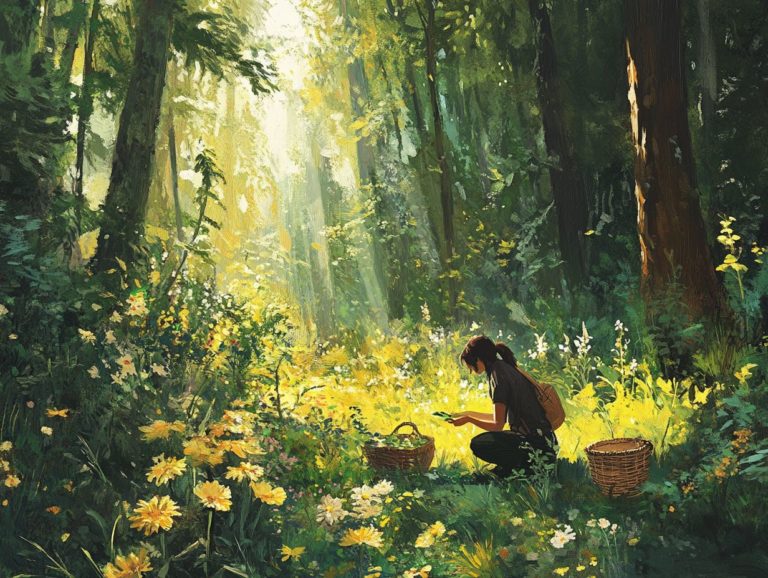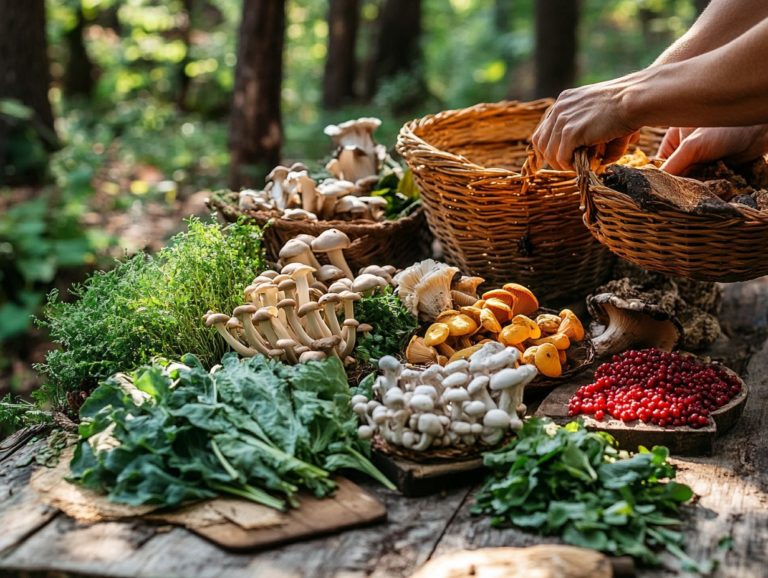What Wild Edibles Are Available Year-Round?
Wild edibles are nature’s hidden treasures.
They reveal unique flavors and abundant nutritional benefits just waiting to be discovered.
Whether you re foraging for edible plants like elderberries and chanterelles in your own backyard or exploring local parks, these plants offer a sustainable food source that s available year-round.
This guide will equip you with the knowledge of their nutritional value, safe harvesting techniques, and how to identify and cook with them.
Get ready for an exciting adventure of wild foraging!
Contents
- Key Takeaways:
- Benefits of Eating Wild Edibles
- Year-Round Availability of Wild Edibles
- Identifying and Harvesting Wild Edibles
- Precautions and Safety Measures
- Preparing and Cooking Wild Edibles
- Frequently Asked Questions
- What Wild Edibles Are Available Year-Round?
- Are there any fruits that are available year-round in the wild?
- Can I eat wild mushrooms year-round?
- Are there any wild edibles that are available in winter?
- Can I find any wild edibles in urban areas year-round?
- Are there any wild edibles that are available year-round in all regions?
Key Takeaways:
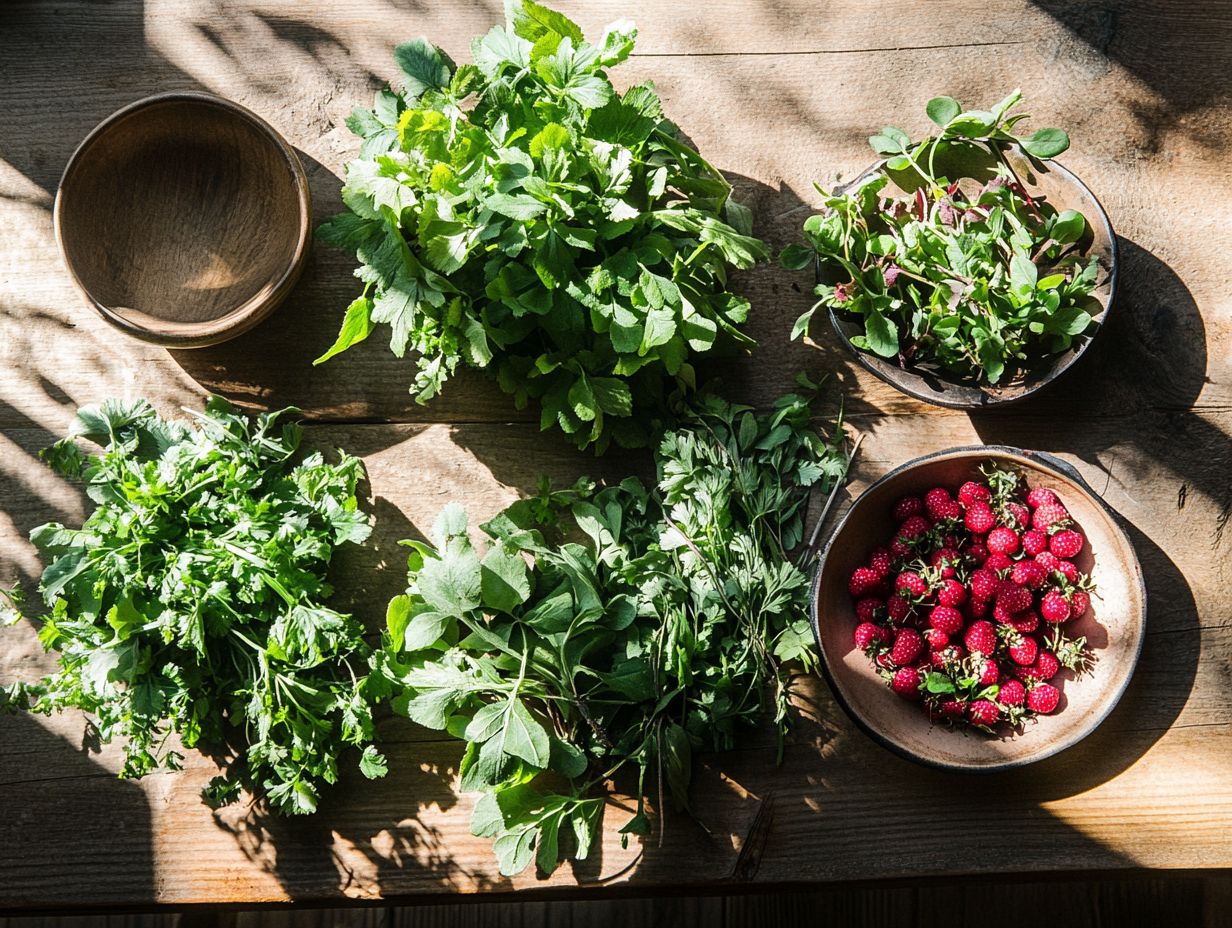
- Incorporating wild edibles into your meals enhances your connection to nature and supports local biodiversity.
- Knowing how to identify and safely harvest wild edibles is crucial for your safety and enjoyment.
- With the right knowledge, wild edibles can add delicious flavors to your meals.
What are Wild Edibles?
Wild edibles are those remarkable plants that flourish naturally in your environment, just waiting to be foraged or harvested for delightful culinary experiences.
Imagine foraging for tasty elderberries, vibrant dandelions, or aromatic wild garlic a popular ingredient in numerous culinary dishes. These plants not only tantalize your taste buds but also forge a profound connection to nature and promote ecological balance through responsible harvesting.
As you explore the medicinal benefits of wild edibles, mastering your plant identification skills becomes crucial for anyone eager to dive into this rewarding pursuit. Engaging in seasonal foraging allows you to appreciate summer blooms and autumn treasures.
These wild food sources do wonders for your diet while enhancing biodiversity and ecological balance.
Take beach rose, for example, with its fragrant petals and vitamin-rich hips it s a delightful addition to salads and jams. Bilberries, on the other hand, offer a slightly tart yet sweet flavor, making them perfect for that autumn pie you ve been dreaming of.
Engaging in foraging demands your keen attention to detail; misidentifying plants can lead to unpleasant consequences. Thus, it s essential to familiarize yourself with local flora, nurturing a deeper appreciation for the land and fostering mindfulness and respect for the ecosystem.
This journey into wild edibles is not just about savoring flavors; it’s an invitation to cultivate a meaningful bond with nature, encouraging you to reconnect with your surroundings.
Benefits of Eating Wild Edibles
Eating wild edibles presents a wealth of benefits, from exceptional nutritional value to cultivating a profound connection with the environment and local biodiversity.
By incorporating nutrient-rich plants such as wild mint and watercress into your diet, you enhance your health while embracing sustainable foraging practices that nourish both your body and the planet.
Engaging in foraging workshops helps you build community connections and enriches your sense of shared ecological knowledge, enabling you to learn from others and appreciate the seasonal treasures nature has to offer.
Nutritional Value and Sustainability
Wild edibles are often plants that are full of nutrients and can significantly enhance your balanced diet. They offer vitamins, minerals, and essential nutrients that cultivated produce sometimes lacks.
When you forage for seasonal treasures like wild mint and chanterelles, you re not just indulging in fresh, flavorful ingredients; you re also embracing sustainable foraging methods that prioritize ecological health and local biodiversity.
The nutritional value of these wild plants is elevated by their unique life cycles and natural growing conditions, making them a remarkable addition to any meal. These natural ingredients frequently pack higher levels of antioxidants, phytochemicals, and omega fatty acids compared to their cultivated counterparts, such as spinach or cultivated mushrooms.
By incorporating items like dandelion greens or nettles, you can enjoy an impressive boost of vitamins A and C often outshining conventional greens.
Practice responsible foraging by only taking what you need, ensuring a thriving ecosystem! Engaging in these techniques, like leaving the environment undisturbed, ensures the sustainability of wild edible populations.
This practice not only safeguards the ecosystem but also encourages biodiversity, fostering a healthier habitat for both wild plants and wildlife. By embracing local flavors and respecting nature, you can forge a deeper connection with your surroundings while elevating your diet.
Year-Round Availability of Wild Edibles
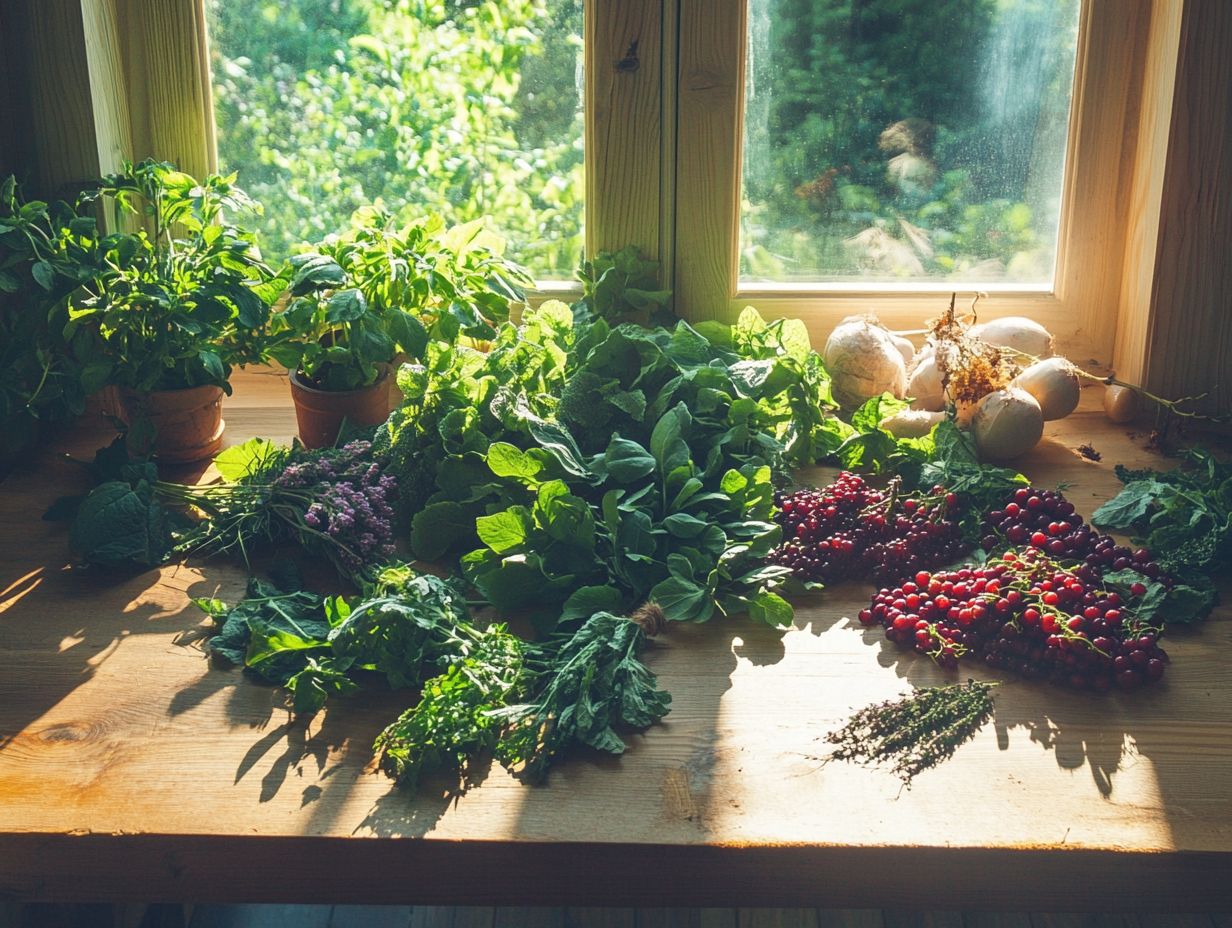
The allure of wild edibles is found in their year-round availability, inviting you to engage with nature through seasonal foraging and winter foraging practices that showcase the rich diversity each season has to offer.
Picture the summer blooms of vibrant edible flowers, and then transition to the autumn treasures like elderberries and rose hips. Each season unfolds new opportunities to discover and harvest wild plants that align beautifully with a sustainable lifestyle.
This ongoing journey of foraging not only enriches your diet but also deepens your appreciation for local biodiversity. It equips you with the ecological knowledge needed to identify and safely gather these remarkable plants.
Seasonal Changes and Year-Round Availability
Seasonal changes significantly influence the availability of wild edibles, making plant identification an essential skill for you as a forager. Throughout the year, you can discover a variety of unique offerings, such as vibrant dandelions in spring, nutrient-rich pine resin in winter, and succulent wild garlic in summer.
Each of these seasonal delights contributes to a diverse and flavorful diet. Understanding these patterns is essential for successful foraging, allowing you to immerse yourself in nature while reaping the rewards it offers.
Take fall, for example, when berries like blackberries and huckleberries reach their peak, providing a sweet indulgence just as the leaves begin to change. Each season brings its distinct characteristics that shape the landscape and the types of flora thriving within it.
You ll find that being attentive to the changes in your environment can be incredibly beneficial, as some plants may bloom only briefly or might be easily confused with less desirable varieties.
Thus, honing your keen eye for detail not only enriches your foraging experience but also deepens your connection to the earth s cycles. This practice ensures sustainable foraging as you learn to respect the delicate balance of nature.
Identifying and Harvesting Wild Edibles
Identifying and harvesting wild edibles requires strong plant identification skills. Joining foraging workshops with experienced foragers boosts your confidence and skills, enabling you to find treasures like morel mushrooms.
Foraging for morel mushrooms can be a rewarding experience, especially in the spring season. It’s also essential to understand sustainable harvesting practices for seeds and leaves, ensuring that your foraging efforts do not adversely affect local ecosystems.
This mindful approach allows future generations to relish the same natural treasures that you cherish.
Tools and Techniques for Safe Harvesting
Using the right tools and techniques for safely harvesting wild edibles is essential for safety and the preservation of the plants themselves.
A well-equipped forager knows that a sturdy foraging basket is key to keeping gathered items fresh while allowing for proper air circulation.
Compact, sharp knives are critical for cutting through tough stems or roots cleanly, ensuring the surrounding habitat remains undamaged.
Field guides, whether digital or printed, act as extremely helpful references, helping identify edible species and their look-alikes.
You should adopt practices that help the environment, such as rotating your harvesting locations and only taking a small percentage of what you find. This approach not only protects the ecosystem but also ensures future yields.
Being mindful of seasonal changes and local regulations enhances responsible foraging practices, contributing to greater ecological awareness.
Precautions and Safety Measures
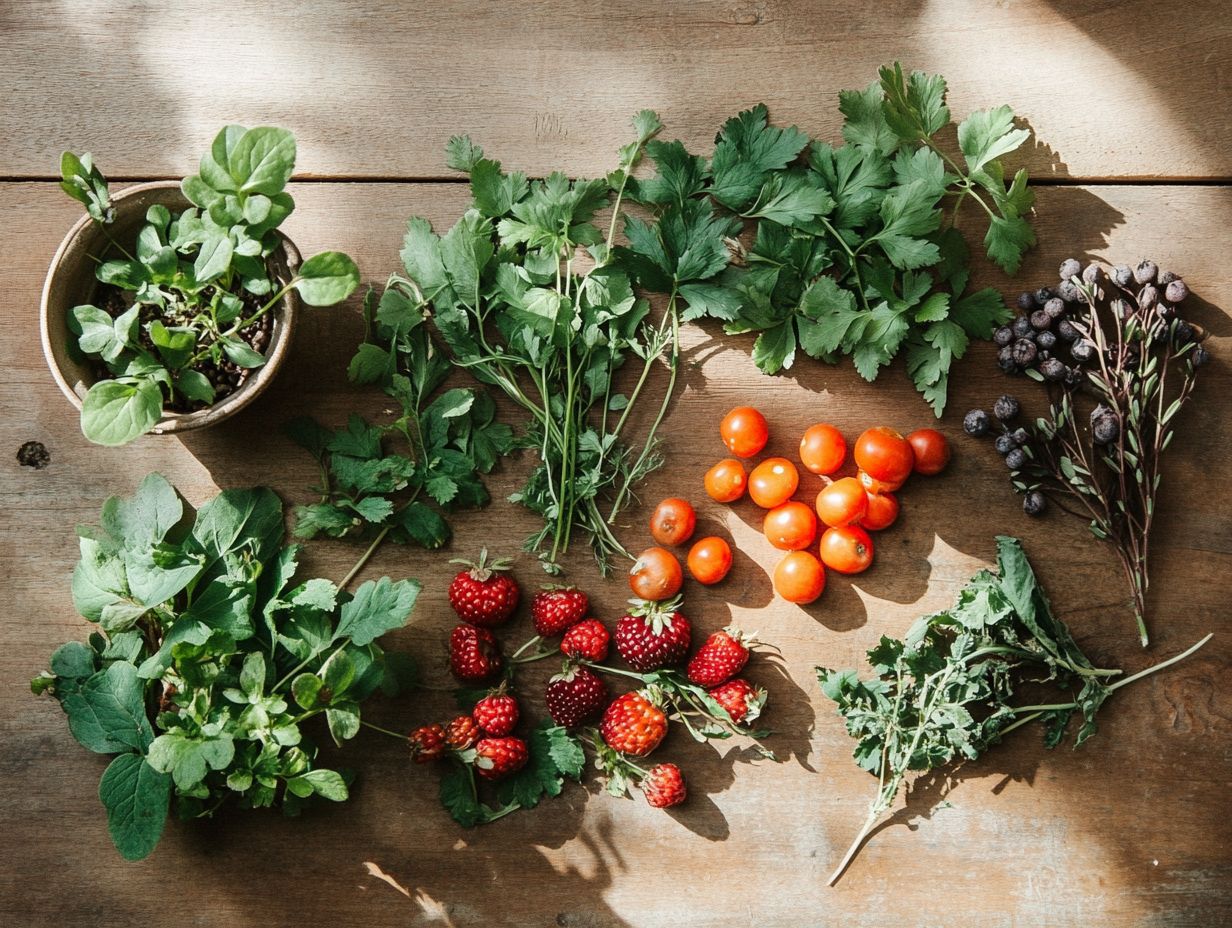
When foraging for wild edibles, it’s crucial to understand the necessary precautions and safety measures. This knowledge helps avoid dangers posed by poisonous plants that can easily be mistaken for their edible counterparts.
Familiarizing yourself with common toxic plants, like specific types of mushrooms and berries, is essential for fully enjoying the bounty of wild edibles without adverse effects.
By practicing safe foraging techniques and educating yourself thoroughly on plant identification, you can greatly reduce risks and deepen your connection to nature.
How to Avoid Poisonous Plants
Avoiding poisonous plants while foraging requires building a solid foundation in plant identification and adopting a cautious approach to harvesting wild edibles.
To ensure safety, familiarize yourself with local poisonous species, like toxic hemlock and certain varieties of mushrooms, while continuously honing identification skills through practice and education.
Developing a keen eye and staying aware of surroundings allows you to safely enjoy the abundant gifts that nature has to offer.
Consulting reliable field guides or mobile apps can significantly enhance your ability to identify plants accurately. Joining local foraging groups or attending workshops led by experienced foragers provides invaluable firsthand knowledge.
Community resources often showcase shared experiences, which are essential for learning to recognize the subtle differences between edible and poisonous plants.
Keeping a journal to document foraging adventures, including notes on various plant growth stages and specific habitats, proves beneficial. This organized approach solidifies your understanding and nurtures a deeper connection with the natural environment.
Preparing and Cooking Wild Edibles
Preparing and cooking wild edibles presents a remarkable opportunity for flavor exploration, as each plant introduces its own unique taste and texture to your culinary repertoire.
Imagine crafting herbal infusions with fragrant wild mint or saut ing tender chanterelles alongside dandelion greens; the culinary possibilities are truly endless with these nutrient-rich wild plants.
By employing cooking techniques that elevate the natural flavors of wild edibles, you can fully savor the treasures that nature has to offer, all while indulging in a delicious and sustainable meal.
Start your foraging adventure today!
Recipes and Tips for Cooking Wild Edibles
Creating delicious dishes with wild edibles is exciting. It invites you to explore a world of unique flavors and textures.
These ingredients deliver intriguing tastes and offer health benefits that cultivated varieties might lack. Imagine the vibrant burst of freshly-picked stinging nettles in a spring soup!
By embracing seasonal treasures, you can expand your recipe repertoire. Invite friends and family to join in the adventure of foraging and cooking together.
Consider soaking wild herbs or making infused oils to elevate your dishes. The beauty of working with natural ingredients lies in the endless opportunities to personalize every recipe.
Frequently Asked Questions
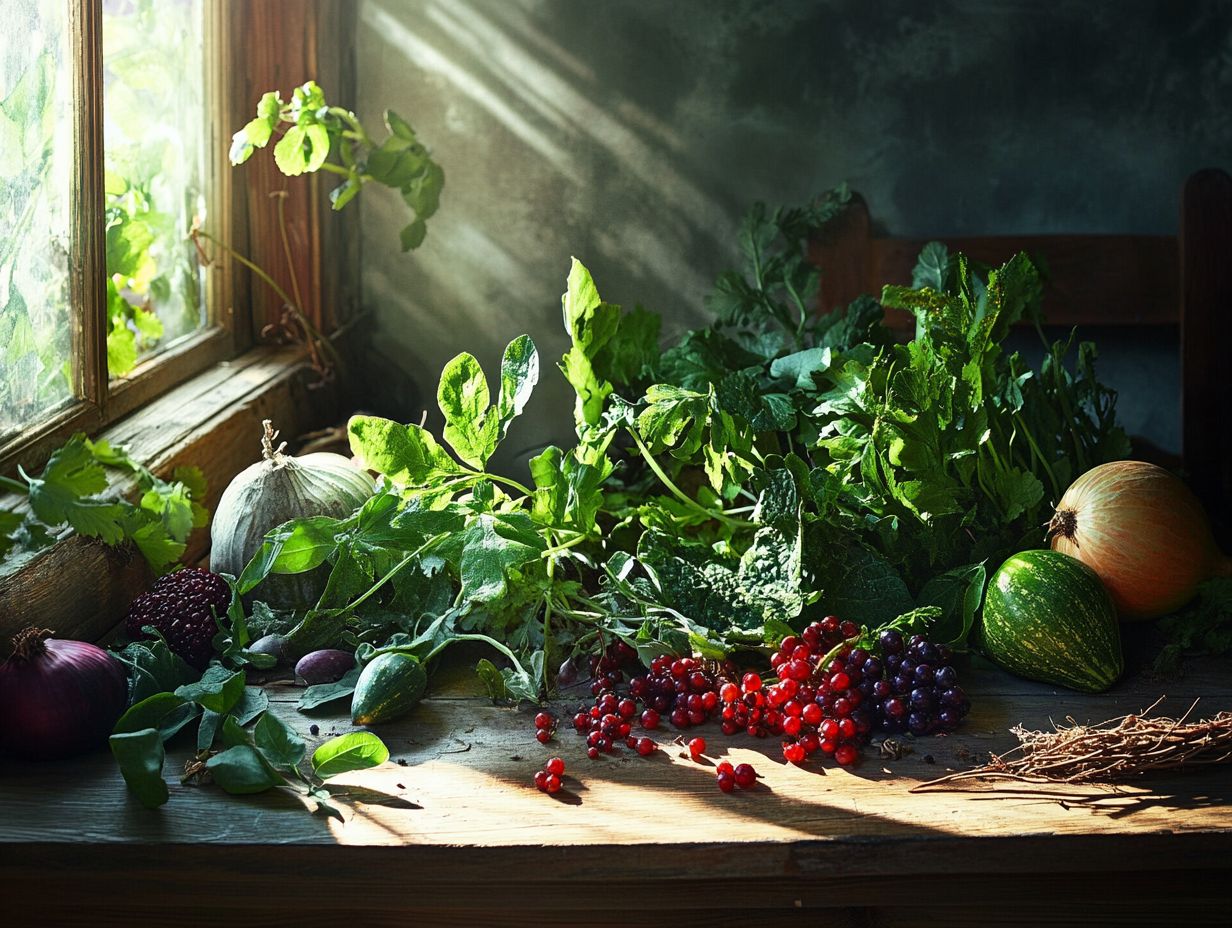
What Wild Edibles Are Available Year-Round?
Many wild edibles are available year-round, depending on your location and climate. For instance, you can find dandelion greens, chickweed, wild garlic, and even learn more about what to forage in winter.
Are there any fruits that are available year-round in the wild?
A few fruits can be found year-round in the wild, like cactus fruit, huckleberries, and elderberries. However, availability varies based on your location.
Can I eat wild mushrooms year-round?
No, it is not safe to eat wild mushrooms year-round. Mushroom season typically occurs at specific times of the year, and proper identification is crucial to avoid toxic varieties.
Are there any wild edibles that are available in winter?
Yes, some wild edibles can be found in winter, such as rose hips, pine needles, and wintergreen berries. Research and proper identification are essential before consuming them.
Can I find any wild edibles in urban areas year-round?
Yes, several wild edibles can be found in urban areas year-round, including purslane, common mallow, and lamb’s quarters. Avoid foraging in potentially contaminated areas.
Are there any wild edibles that are available year-round in all regions?
No, wild edibles vary in availability based on region and climate. It’s important to research which wild edibles are available in your specific area before foraging.



